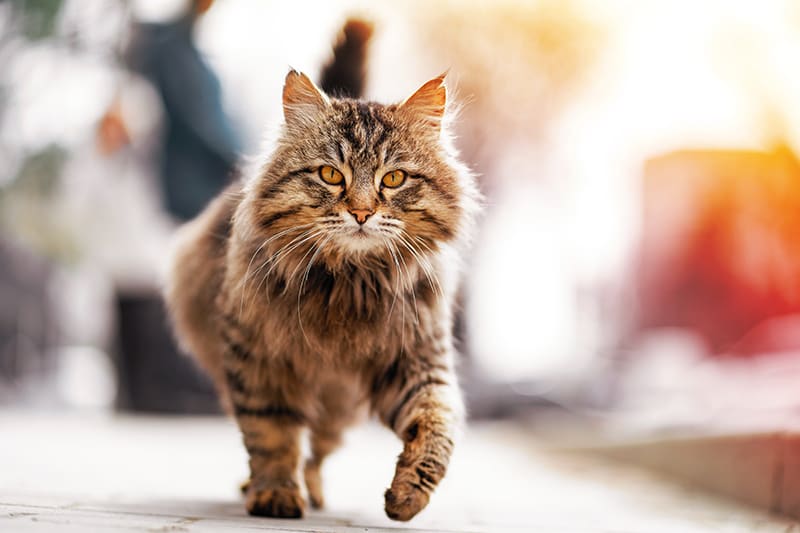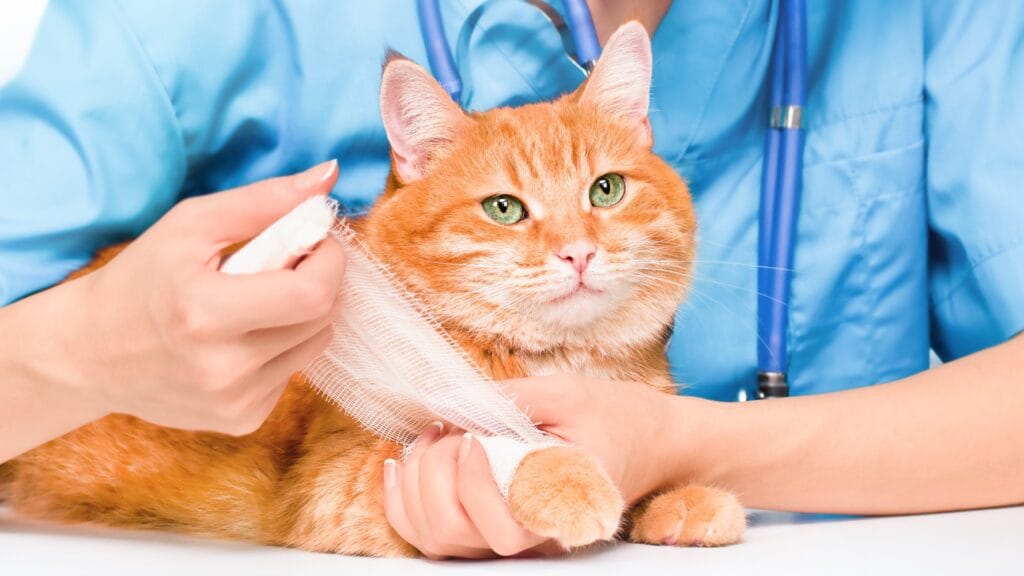Cat Limping? 🐾 Here’s the Real Reason Your Kitty’s Hobbling—and What You Should Do Now!

There’s something incredibly unsettling about seeing your cat limp. One moment they’re darting across the hallway like a furry rocket, and the next, they’re hobbling like an old sailor after a long voyage.
You might find yourself thinking: “Why is my cat limping?” or “My cat is limping but still jumping and running—should I be worried?” It’s hard not to panic when your independent, agile feline suddenly seems… not so agile.
So take a deep breath, pet parent. This isn’t just a list of dry facts—it’s your compassionate, expert-guided roadmap to understanding cat limping and acting fast to help your fur baby bounce back. From sprains to serious health concerns, we’ll uncover what could be going on and what to do if your cat is limping—without leaving you feeling overwhelmed.
Table of Contents
Why Is My Cat Limping? Decoding the Silent Signals
Cats are master illusionists when it comes to hiding pain. By the time your cat is visibly limping, chances are they’ve been dealing with discomfort for a while. Some cats may still jump and run despite a limp, which often misleads pet owners into thinking, “Oh, it can’t be that serious.”
But here’s the deal: Limping is always a sign that something is wrong. Whether it’s mild and temporary or the beginning of a chronic issue, it deserves attention.
1. Minor Injuries: Twists, Sprains, and Bruises
Let’s start with the most common cause—minor injuries. Just like us, cats can tweak a muscle or land awkwardly after an ambitious leap. It happens. But even minor injuries can result in a visible limp, especially in the back legs, which bear much of the impact during jumping.
Signs to Look For:
- A limp that improves over a couple of days
- Favoring one leg, but still managing to jump/run
- Sensitivity when you gently touch the affected limb
- No open wounds, but maybe slight swelling or heat
Why It Happens:
- A rough landing from a high perch
- Overexertion during playtime
- Stepping on something sharp—glass, rocks, even a rogue Lego
What to Do if My Cat Is Limping:
- Rest is key: Limit activity for 24–48 hours. Set up a cozy space away from high furniture.
- Inspect the paw: Look for splinters, cuts, or anything lodged between the toes.
- Cold compress: Wrap a cold pack in a soft towel and apply it gently to reduce swelling.
- Monitor: If it doesn’t improve within two days, get to the vet.
👩⚕️ Vet Tip – Dr. Sarah Paws, DVM:
“Minor limps can fool you. If your cat limping back leg doesn’t improve within 48 hours, we may be dealing with more than just a sprain—like a soft tissue tear or hidden fracture.”
2. Arthritis: The Silent Age-Related Ailment

Think arthritis is just a dog or human problem? Think again. Cats, especially those over 7 years old, are prone to degenerative joint disease. And it often starts subtly—your cat may still leap, but they start hesitating more or seem stiff when waking up.
Clues It Might Be Arthritis:
- Stiff movement after naps
- Reluctance to jump to high surfaces they used to conquer easily
- A persistent limp in a back leg
- Crankiness when touched near joints
Causes:
- Age-related cartilage breakdown
- Obesity adding pressure to joints
- Old injuries that never fully healed
What to Do:
- See the vet: X-rays or joint exams will confirm arthritis.
- Joint supplements: Glucosamine, chondroitin, or omega-3s can help.
- Weight management: A healthy weight reduces joint strain.
- Home tweaks: Use ramps, low-sided litter boxes, and plush beds.
👩⚕️ Dr. Emma Whiskers, DVM says:
“A cat limping but still jumping might be in early-stage arthritis. Don’t wait for them to stop jumping—start treatment early and slow the progression.”
3. Abscesses or Infections: The Hidden Battle Under Fur
Especially in outdoor or multi-cat homes, bite wounds or scratches can lead to infected abscesses. They often go unnoticed until they swell up and become painful, causing a sudden and severe limp.
Signs:
- A lump that’s warm, red, or painful
- Bad odor or discharge from a wound
- Loss of appetite or energy
- Rapid onset of limping
Common Causes:
- Cat fights (territory disputes are no joke!)
- Bacteria entering through a cut or puncture
- Hidden splinters or thorns
What to Do:
- Do not pop it: Abscesses need to be drained professionally.
- Gently clean the area if there’s an open wound—but don’t use human antiseptics without vet guidance.
- See the vet quickly for antibiotics and drainage.
👨⚕️ Dr. Paws adds:
“If you see your cat limping back leg and notice swelling or heat, it could be an abscess. Left untreated, infections spread and become life-threatening.”
4. Fractures or Serious Trauma

A limp that suddenly appears after a fall or accident and doesn’t improve? It might be something serious—like a fracture.
Warning Signs:
- Your cat refuses to put any weight on the leg
- Swelling or an odd angle to the leg
- Vocalizing in pain, especially when touched
- Hiding, shaking, or acting lethargic
How It Happens:
- Falling from a high place (even windowsills!)
- Getting hit by a car (for outdoor cats)
- Getting caught in tight spaces or fences
Immediate Steps:
- Vet visit ASAP: Fractures require urgent attention.
- Don’t try to move the leg: Use a towel or carrier to transport your cat carefully.
- Keep calm: Your stress = their stress.
👩⚕️ Dr. Whiskers warns:
“Any time a cat won’t bear weight, assume a fracture. Waiting could mean permanent damage or unnecessary suffering.”
5. Neurological or Systemic Disorders
Now we’re entering more complex territory. Sometimes, a limp isn’t about the limb—it’s about the nerves or internal health. Neurological disorders or systemic diseases can mess with coordination and cause intermittent or shifting limps.
Red Flags:
- Limping that shifts legs or comes and goes
- Wobbling, collapsing, or tremors
- Changes in appetite, water intake, or behavior
- “My cat is limping but still jumping and running” in a strange, off-balance way
Possible Causes:
- Diabetes (causing neuropathy)
- Tumors pressing on nerves
- Spinal injuries
- Nerve trauma or degeneration
What to Do:
- Full vet workup: Expect bloodwork, X-rays, maybe even MRIs.
- Track symptoms: A log of when the limping happens and for how long helps immensely.
- Follow treatment: This may involve lifelong management, but many cats thrive with the right care.
👨⚕️ Dr. Paws concludes:
“Limping that seems mysterious or doesn’t involve a clear injury might be neurological. Don’t ignore it—these conditions can escalate quickly.”
Your Cat Limping Action Plan
Let’s simplify it. Here’s what to do when your cat starts limping:
- Observe: Which leg is affected? Is the limp getting worse?
- Gently Inspect: Look for wounds, swelling, or foreign objects.
- Limit Activity: Keep them calm, comfy, and grounded.
- First Aid: Use cold compresses or clean minor cuts.
- Vet Time: If it lasts longer than 48 hours or worsens—go.
👩⚕️ Dr. Whiskers reminds:
“When in doubt, let the vet sort it out. You’re not overreacting—you’re protecting your cat’s future health.”
Prevention: Keeping Kitty’s Legs in Top Shape

An ounce of prevention? Worth a whole vet bill.
- Indoor lifestyle = fewer injuries.
- Safe toys & furniture = less risk of sprains.
- Weight control = less pressure on joints.
- Regular nail trims = better footing.
- Annual vet checks = catch problems early.
🧑⚕️ Dr. Paws suggests:
“Outdoor cats love adventure, but it comes at a cost. Try catios or supervised walks to keep them stimulated and safe.”
FAQs: Quick Answers for Anxious Pet Parents
My cat is limping but still jumping and running. Should I worry?
Yes, but don’t panic. It could be minor, but if it lasts longer than 48 hours, or worsens, consult a vet.
Why is my cat limping on their back leg?
Back leg limps are common with sprains, arthritis, or abscesses. Trauma and nerve issues are also possible.
Can I give my cat human pain medication?
Never. Even small amounts of meds like ibuprofen or aspirin can be toxic. Only use vet-prescribed options.
What to do if my cat is limping but seems fine otherwise?
Monitor closely. Restrict movement, apply cold compresses, and contact your vet if it doesn’t improve in 48 hours.
Final Purrspective
You’re here because you love your cat—and that’s everything. Limping may seem small, but it speaks volumes about your cat’s wellbeing. Whether it’s a bump, bruise, or something deeper, paying attention is the best gift you can give them.
Be curious. Be cautious. And when needed, be your cat’s hero.
Got a story about your cat limping? Drop it in the comments or reach out with questions—let’s support each other in giving our kitties the best care possible. 💬🐾
